- Home
- Alison Weir
The Lost Tudor Princess: The Life of Lady Margaret Douglas
The Lost Tudor Princess: The Life of Lady Margaret Douglas Read online
Copyright © 2015 by Alison Weir
All rights reserved.
Published in the United States by Ballantine Books, an imprint of Random House, a division of Penguin Random House LLC, New York.
BALLANTINE and the HOUSE colophon are registered trademarks of Penguin Random House LLC.
Published in hardcover in Great Britain by Jonathan Cape, a division of Penguin Random House London, as The Lost Tudor Princess:
The Life of Margaret Douglas, Countess of Lennox in 2015.
Library of Congress Cataloging-in-Publication Data
Names: Weir, Alison, author.
Title: The lost Tudor princess : the life of Margaret Douglas of Scotland /Alison Weir. Description: New York : Ballantine Books, 2016. | Includes bibliographical references.
Identifiers: LCCN 2015037958| ISBN 9780345521392 (hardcover : alk. paper) | ISBN 9780345521415 (ebook)
Subjects: LCSH: Lennox, Margaret Douglas, Countess of, 1515–1578. | Great Britain—History—Tudors, 1485–1603—Biography. | Henry VIII, King of England, 1491–1547—Family. | Nobility—Great Britain—History—16th century. | Mary, Queen of Scots, 1542–1587—Family. | Nobility—Great Britain—Biography.
Classification: LCC DA317.8.L49 W45 2016 | DDC 942.05/2092—dc23
LC record available at http://lccn.loc.gov/2015037958
eBook ISBN 9780345521415
randomhousebooks.com
Title page image: copyright © iStock.com / © traveler1116
Book design by Victoria Wong, adapted for eBook
Cover design: Victoria Allen
Cover images: Tower of London © Historic Royal Palaces; portrait of Margaret Douglas reproduced by permission of Somerley Enterprises
v4.1
a
Contents
Cover
Title Page
Copyright
Illustrations
Introduction
Prologue
CHAPTER 1 “A Fair Young Lady”
CHAPTER 2 “Disdained with Dishonour”
CHAPTER 3 “The Princess of Scotland”
CHAPTER 4 “Suffering in Sorrow”
CHAPTER 5 “Now May I Mourn”
CHAPTER 6 “Beware the Third Time”
CHAPTER 7 “A Strong Man of Personage”
CHAPTER 8 “This Happy Match”
CHAPTER 9 “Great Unnaturalness”
CHAPTER 10 “The Person Best Suited to Succeed”
CHAPTER 11 “The Second Person in the Kingdom”
CHAPTER 12 “Her Son Should Be King”
CHAPTER 13 “Indignation and Punishment”
CHAPTER 14 “Lady Lennox’s Disgrace”
CHAPTER 15 “Strait Imprisonment”
CHAPTER 16 “In Great Trouble”
CHAPTER 17 “Horrible and Abominable Murder”
CHAPTER 18 “Business Most Vile”
CHAPTER 19 “Treason Bereft Me”
CHAPTER 20 “The Hasty Marriage”
CHAPTER 21 “Till Death Do Finish My Days”
CHAPTER 22 “A Progenitor of Princes”
Maps
Margaret’s Scotland
Margaret’s England
Genealogical Tables
Appendix I: Margaret’s Portraiture
Appendix II: Miscellaneous Poems Copied by Margaret Douglas into the Devonshire Manuscript
Chief Dramatis Personae
Photo Insert
Dedication
Notes and References
Bibliography
By Alison Weir
About the Author
Illustrations
pai1.1 Unknown woman by Hans Holbein. (Royal Collection Trust/© Her Majesty Queen Elizabeth II 2015)
pai1.2 The Somerley Portrait, attributed to Luca Penni. (Reproduced by permission of Somerley Enterprises)
pai1.3 Unknown woman by William Scrots, ca.1544–55. (© Christie’s Images Limited, 2015)
pai1.4 The only authenticated portrait of Margaret; detail from the Darnley Memorial painting by Livinius de Vogelaare, 1568. (Royal Collection Trust/© Her Majesty Queen Elizabeth II 2015)
pai1.5 Archibald Douglas, Earl of Angus, French School, sixteenth century. (Royal Collection Trust/© Her Majesty Queen Elizabeth II 2015)
pai1.6 Margaret Tudor, possibly French School, copy of an original portrait of ca.1514–15. (The Provost and Fellows of The Queen’s College, Oxford)
pai1.7 Harbottle Castle, Northumberland. (© Daniel Ewen)
pai1.8 Tantallon Castle, East Lothian. (© Kieran Baxter)
pai1.9 Norham Castle, Northumberland. (© Bailey: Jonathan/Arcaid/Corbis)
pai1.10 Henry VIII, artist unknown, Anglo-Netherlandish School, ca.1535–40. (© National Portrait Gallery, London)
pai1.11 Mary Tudor, Duchess of Suffolk, eighteenth-century copy of a portrait attributed to Johannes Corvus (Jan Rav). (By permission of Sudeley Castle)
pai1.12 The Princess Mary, later Mary I, by Master John, 1544. (© National Portrait Gallery, London)
pai1.13 Mary Shelton by Hans Holbein. (Royal Collection Trust/© Her Majesty Queen Elizabeth II 2015)
pai1.14 Mary Howard, Duchess of Richmond, by Hans Holbein, ca.1532–23. (Royal Collection Trust/© Her Majesty Queen Elizabeth II 2015)
pai1.15 Queen Anne Boleyn, attributed to British School, sixteenth century. (Royal Collection Trust/© Her Majesty Queen Elizabeth II 2015)
pai1.16 Verses copied by Margaret into the Devonshire Manuscript. (By permission of the British Library, Additional MS. 17,492 The Devonshire Manuscript, Margaret Lennox 65 r)
pai1.17 The Tower of London, engraving by Wenceslaus Hollar, ca.1640. (The Thomas Fisher Rare Book Library, University of Toronto)
pai1.18 Syon Abbey by Jonathan Foyle, 2004. (© Dr Jonathan Foyle)
pai1.19 Kenninghall, Norfolk. (Arundel Castle Archives, and reproduced by kind permission of His Grace the Duke of Norfolk)
pai1.20 Thomas Howard, 3rd Duke of Norfolk, by Hans Holbein, 1539. (Royal Collection Trust/© Her Majesty Queen Elizabeth II 2015)
pai1.21 The “Man in Red,” German Netherlandish School, ca.1530–50. (Royal Collection Trust/© Her Majesty Queen Elizabeth II 2015)
pai1.22 Marie de Guise, Queen Dowager of Scotland, artist unknown, seventeenth century. (Royal Collection Trust/© Her Majesty Queen Elizabeth II 2015)
pai1.23 St James’s Palace, London. (© Cindy A Eve—3DaysInLondon.info)
pai1.24 The Chapel Royal, St James’s Palace. (© WPA Pool/Getty Images)
pai1.25 Stepney Palace. (The Angus Library and Archive, Regent’s Park College)
pai1.26 Wressle Castle. (© Mark Morton)
pai1.27 Temple Newsam, engraving by Johannes Kip, 1707. (© UK Government Art Collection)
pai1.28 The west wing of Temple Newsam. (© Stephen Woodcock)
pai1.29 Settrington, Yorkshire. (© North York Moors National Park Authority)
pai1.30 Jervaulx Abbey. (© Heritage Images/Getty Images)
pai1.31 Queen Katherine Parr, artist unknown, ca.1545. (© National Portrait Gallery, London)
pai1.32 Miniature of an unknown woman, by Levina Teerlinc, ca.1560. (© Victoria and Albert Museum, London)
pai1.33 Anne Stanhope, Countess of Hertford and Duchess of Somerset. (U1590 Z68—Courtesy of Kent History & Library Centre, Maidstone by kind permission of The Trustees of Chevening Estate)
pai1.34 Probably Katherine Willoughby, Duchess of Suffolk, artist unknown, sixteenth century. (Photographic Survey, The Courtauld Institute of Art, London. Private collection)
pai1.35 Elizabeth I, miniature by Nicholas Hilliard, ca.1572. (
© National Portrait Gallery, London)
pai1.36 William Cecil, Lord Burghley, artist unknown, seventeenth century. (© National Trust Images)
pai1.37 Robert Dudley, Earl of Leicester, attributed to Steven van der Meulen, ca.1560–65. (© The Wallace Collection, London)
pai1.38 The former Charterhouse at Sheen, pen and ink with watercolour by Antonis van der Wyngaerde, 1562. (WA.C.LG.IV.12b, detail from: Richmond Palace from across the Thames, © Ashmolean Museum, University of Oxford)
pai1.39 Henry, Lord Darnley, and Charles Stuart, by Hans Eworth, 1563. (Royal Collection Trust/© Her Majesty Queen Elizabeth II 2015)
pai1.40 Henry, Lord Darnley, and Charles Stuart, attributed to Hans Eworth, 1562. (Royal Collection Trust/© Her Majesty Queen Elizabeth II 2015)
pai1.41 Margaret’s unnamed daughters, from her tomb in Westminster Abbey. (© Angelo Hornak/Corbis)
pai1.42 The Lennoxes’ house at Whorlton, drawing by Samuel Buck, 1725. (By permission of the British Library, MS.914 Lansdowne MS)
pai1.43 The Lennox Jewel, obverse and reverse. (Royal Collection Trust/© Her Majesty Queen Elizabeth II 2015)
pai1.44 Mary, Queen of Scots, artist unknown, ca.1569. (Reproduced by permission of Blairs Museum)
pai1.45 Henry, Lord Darnley, artist unknown, 1567. (© Alan Spencer Photography)
pai1.46 The Lieutenant’s Lodging (now the Queen’s House) in the Tower of London. (© Sebastian Wasek/LOOP IMAGES/Loop Images/Corbis)
pai1.47 The murder scene at Kirk O’Field. (The National Archives, MPF 1/366)
pai1.48 Coldharbour, London, from Walter Thornbury’s London, Old and New. (Digital Collections and Archives, Tufts University)
pai1.49 Somerset Place, Strand, London. (© Look and Learn)
pai1.50 The Darnley Memorial, by Livinius de Vogelaare, 1568. (Royal Collection Trust/© Her Majesty Queen Elizabeth II 2015)
pai1.51 The Darnley Memorial, undefaced copy after Livinius de Vogelaare, ca.1568. (The Trustees of the Goodwood Collection/Bridgeman Images)
pai1.52 Matthew Stuart, Earl of Lennox, by Livinius de Vogelaare, ca.1568. (© National Trust Images)
pai1.53 John Erskine, Earl of Mar, by John Scougal, after an unknown artist. (Scottish National Portrait Gallery)
pai1.54 James Douglas, Earl of Morton, by Arnold van Brounckhorst, ca.1578. (Scottish National Portrait Gallery)
pai1.55 Stirling Castle. (© Joe Cornish/Arcaid/Corbis)
pai1.56 Barber’s Barn, Hackney, artist unknown, lithograph of 1842. (© Victoria and Albert Museum, London)
pai1.57 Brooke House in 1920. (Reproduced by permission of the Bishopsgate Institute)
pai1.58 Brooke House, engraving by Wenceslaus Hollar, 1642. (© Look and Learn)
pai1.59 The chapel at Brooke House, engraving by Wenceslaus Hollar, 1642. (Reproduced by permission of Historic England)
pai1.60 Wall painting in the chapel. (Reproduced by permission of the Survey of London/British History Online)
pai1.61 Charles Stuart as a child, English School, ca.1565. (Hardwick Hall, Derbyshire, UK National Trust Photographic Library/Bridgeman Images)
pai1.62 Charles Stuart, Earl of Lennox. (Whereabouts unknown. Every effort has been made to trace the owner of this picture, without success. Anyone with information about it should contact the publishers.)
pai1.63 Bess of Hardwick, Countess of Shrewsbury, attributed to Rowland Lockey, 1590s. (© National Trust Images)
pai1.64 Arbella Stuart, artist unknown, 1577. (© National Trust Images)
pai1.65 “A Scottish lady at length in mourning habit,” British School, sixteenth century. (Royal Collection Trust/© Her Majesty Queen Elizabeth II 2015)
pai1.66 James VI, King of Scots, by Rowland Lockey after Arnold van Brounckhorst’s original of 1574. (Hardwick Hall, Derbyshire, UK National Trust Photographic Library/Bridgeman Images)
pai1.67 Margaret’s tomb in Westminster Abbey. (© Werner Forman/Werner Forman/Corbis)
pai1.68 Margaret’s tomb effigy. (© National Portrait Gallery, London)
Introduction
Royal Tudor blood ran in her veins. Her parentage was of “high renown.”1 Her mother was a queen, her father an earl, and she herself was the granddaughter, niece, cousin, and grandmother of monarchs. Lady Margaret Douglas, Countess of Lennox, was an important figure in Tudor England, and yet today, when her Tudor relations have achieved almost celebrity status, she is largely forgotten.
Her story deserves to be better known. It is of an extraordinary life that spans five Tudor reigns, and is packed with intrigue, drama and tragedy. In an age in which women were expected to be subordinate to men, and to occupy themselves only with domestic concerns, she stands out as a strong, capable and intelligent character who operated effectively, and fearlessly, at the very highest levels of power. The sources for her life are rich and varied, and many of her letters survive. In writing her biography I am building on research I began in 1974, when, wishing to rescue Margaret from obscurity, I started work on a book about her. But my tale of a forgotten Tudor princess remained untold.
In 2010, I attended a lecture on Margaret Douglas by a good friend, Siobhan Clarke, a Tudor historian who guides in costume as Margaret at Hampton Court. Hearing Siobhan revived my interest at a time when the field of Tudor biography was becoming crowded. It reminded me that Margaret Douglas deserved to be better known. Siobhan Clarke was the ideal person to write her biography, and I tried to persuade her to put pen to paper, but she very generously urged me to tackle the project myself. When I put the idea to my publishers, they realized immediately that the life of Margaret Douglas provides many missing links in the story of the Tudor and Stuart dynasties.
As always, I do my research first from original sources, and evolve theories from that. When I come to look at the secondary sources, I sometimes find that other historians have reached the same conclusions. Where they have come up with valid theories different from my own, I have credited them in the notes.
Paragraphs were not used in sixteenth-century letters, but where I have quoted extensively from contemporary letters here, I have broken them up so that they are easier to read. I have used the National Archives Currency Converter to determine the approximate present-day values of sums quoted in the text; these appear in parentheses. Please note that values could change from year to year.
I should like to express my warmest appreciation and thanks to my British editor, Anthony Whittome, and my American editor, Susanna Porter, for their expertise and their wonderful creative ideas, which have enriched the book in so many ways. Thanks are also due to Dan Franklin at Jonathan Cape for so enthusiastically commissioning the book; to Clare Bullock at Cape for her excellent picture research and support; to Jane Selley, for being such an observant and accomplished copy editor; to Alison Rae, for great proofreading; to Neil Bradford for his inspired work on the illustrations sections; to Darren Bennett for his superb maps; and to Ceri Maxwell for being such a great publicist. Special thanks go to Dr. Josephine Wilkinson for preparing the indexes for both the British and American editions of the book; to Nicola Tallis, who came to my rescue as I was racing to a deadline by searching out and transcribing crucial documents in the National Archives and the British Library; to the historian Linda Porter, for thoughtfully offering to lend me Sarah Macauley’s thesis on the Earl of Lennox, which has proved very helpful.
I wish to acknowledge the huge support I have received from my agent, Julian Alexander, and from my husband, Rankin. As the French writer Antoine de Saint-Exupéry once wrote, “One man may hit the mark, another blunder; but heed not these distinctions. Only from the alliance of the one, working with and through the other, are great things born.”
Readers may find it helpful to refer to the Dramatis Personae on this page.
Prologue
In 1515 the Palace of Linlithgow, future birthplace of Mary, Queen of Scots, was a magnificent royal residence overlooking one of Scotland’s most beautiful lochs. A favored residence of the Scottish kin
gs, it had been built by successive monarchs around a great courtyard and boasted a fine hall and princely chambers.
It was to this tranquil setting that, in September that year, Margaret Tudor, Queen Dowager of Scotland, Countess of Angus, and sister of Henry VIII of England, came to bear her seventh child.
We have no record of her going into confinement—or taking to her chamber, as it was known—but it is likely that she followed the ceremonial observed by her mother, Elizabeth of York, and attended a service in chapel, where she and her household prayed for a safe and happy delivery; after this she would have been served spiced wine and comfits before bidding farewell to the lords and officers in attendance and disappearing with her women beyond the traverse, the heavy curtain that hung over the door to her bedchamber. Here she would remain secluded until after her child was born, and it was assumed that she would rest and take good care of herself in preparation for the birth.
But Margaret Tudor did no such thing. She remained in her chamber for just forty-eight hours, convinced that she was in danger and determined to flee from her enemies. At midnight on September 13, accompanied only by her second husband, Archibald Douglas, Earl of Angus, his brother, George Douglas, and four or five servants, she left Linlithgow by stealth. It had been agreed with Thomas, Lord Dacre of Gilsland, Henry VIII’s warden of the northern border Marches, that the sympathetic Alexander, Lord Home, would meet Queen Margaret a few miles from Linlithgow with forty “hardy and well-striking fellows,” and escort her south to Blackadder Tower, a castle in the Scottish borders whence she could easily make her escape into England.1 At the rendezvous, it was decided that, rather than go straight to Blackadder, over sixty miles away, Home should escort the Queen’s party to Angus’s great castle of Tantallon, a spectacular stronghold high on the cliffs overlooking the Firth of Forth, near North Berwick. That still involved a ride of fifty-five miles, and Margaret Tudor, who was nearly eight months’ pregnant, must have been exhausted when she got there.
But there could be no respite. On September 16, the party continued on its way south to Blackadder Tower. The regent of Scotland, the Duke of Albany, who was ruling for Margaret’s infant son, James V, had learned of the Queen’s escape and sent a large force in pursuit—and it was not far behind her. Fearful that her flight would undermine his support in Scotland, or that she would return with an English army, he was intent on bringing her back, and ready to offer concessions. But Margaret Tudor later formally complained that he had already declared her and her husband traitors.2 Fearing that Albany would besiege Blackadder Tower, she continued south toward Berwick, which lay just across the border with England. Sir Anthony Ughtred, its English governor, had no authority to receive her, so she and her party had to cross back over the River Tweed to Scotland, where she sought shelter at Coldstream Priory.3

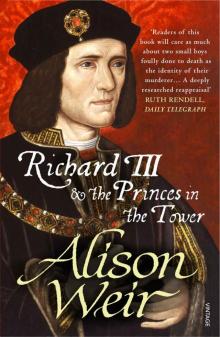 Richard III and the Princes in the Tower
Richard III and the Princes in the Tower Britain's Royal Families: The Complete Genealogy
Britain's Royal Families: The Complete Genealogy The Lady in the Tower: The Fall of Anne Boleyn
The Lady in the Tower: The Fall of Anne Boleyn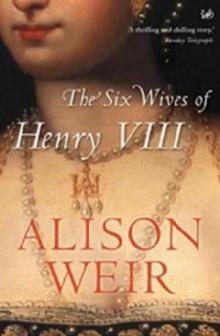 Six Wives of Henry VIII
Six Wives of Henry VIII Elizabeth of York: A Tudor Queen and Her World
Elizabeth of York: A Tudor Queen and Her World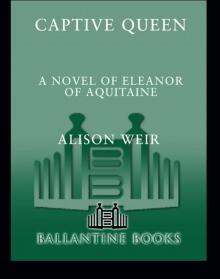 Captive Queen
Captive Queen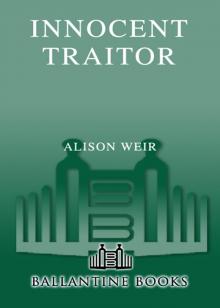 Innocent Traitor
Innocent Traitor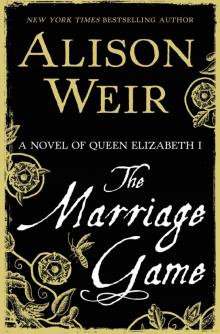 The Marriage Game
The Marriage Game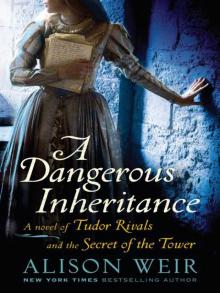 A Dangerous Inheritance
A Dangerous Inheritance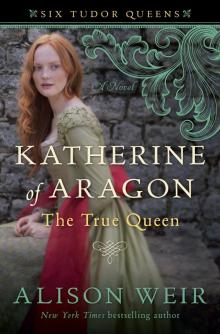 Katherine of Aragón: The True Queen
Katherine of Aragón: The True Queen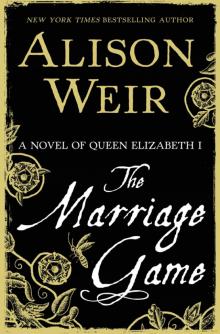 The Marriage Game: A Novel of Queen Elizabeth I
The Marriage Game: A Novel of Queen Elizabeth I Princes in the Tower
Princes in the Tower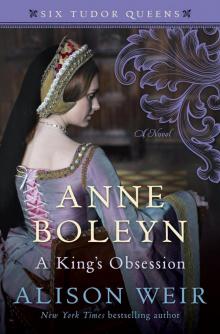 Anne Boleyn: A King's Obsession
Anne Boleyn: A King's Obsession Traitors of the Tower
Traitors of the Tower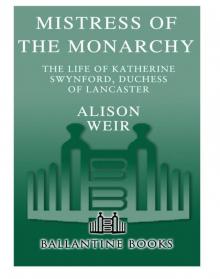 Mistress of the Monarchy: The Life of Katherine Swynford, Duchess of Lancaster
Mistress of the Monarchy: The Life of Katherine Swynford, Duchess of Lancaster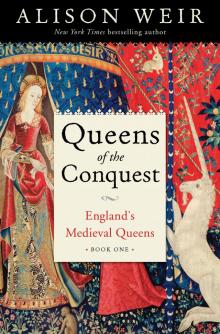 Queens of the Conquest: England’s Medieval Queens
Queens of the Conquest: England’s Medieval Queens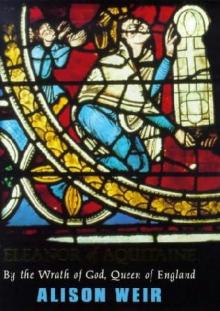 Eleanor of Aquitaine: A Life
Eleanor of Aquitaine: A Life Mary, Queen of Scots, and the Murder of Lord Darnley
Mary, Queen of Scots, and the Murder of Lord Darnley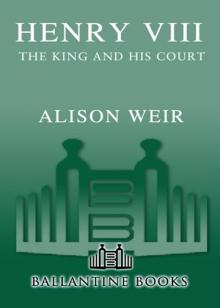 Henry VIII: The King and His Court
Henry VIII: The King and His Court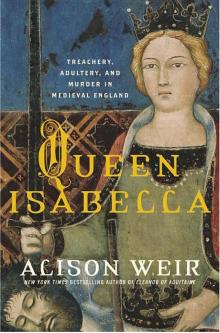 Queen Isabella: Treachery, Adultery, and Murder in Medieval England
Queen Isabella: Treachery, Adultery, and Murder in Medieval England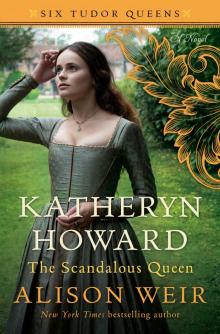 Katheryn Howard, the Scandalous Queen
Katheryn Howard, the Scandalous Queen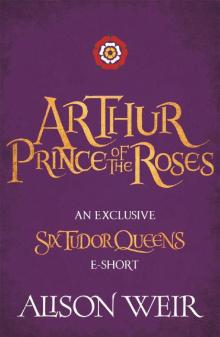 Arthur- Prince of the Roses
Arthur- Prince of the Roses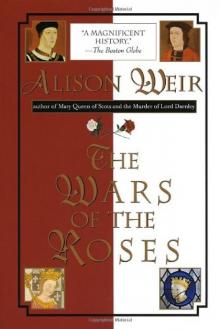 The Wars of the Roses
The Wars of the Roses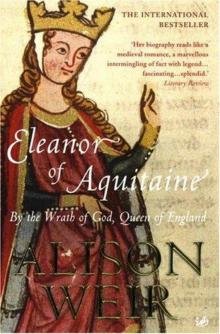 Eleanor of Aquitaine: By the Wrath of God, Queen of England
Eleanor of Aquitaine: By the Wrath of God, Queen of England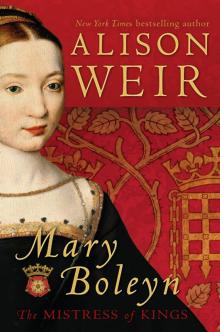 Mary Boleyn: The Great and Infamous Whore
Mary Boleyn: The Great and Infamous Whore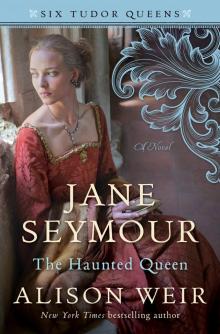 Jane Seymour: The Haunted Queen
Jane Seymour: The Haunted Queen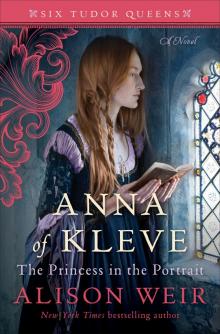 Anna of Kleve, the Princess in the Portrait
Anna of Kleve, the Princess in the Portrait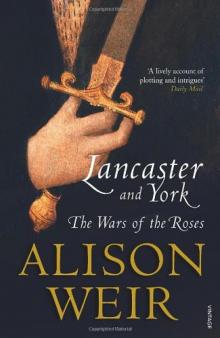 Lancaster and York: The Wars of the Roses
Lancaster and York: The Wars of the Roses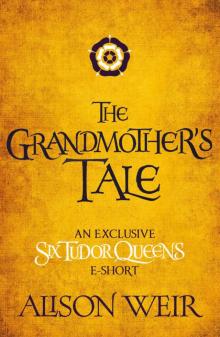 The Grandmother's Tale
The Grandmother's Tale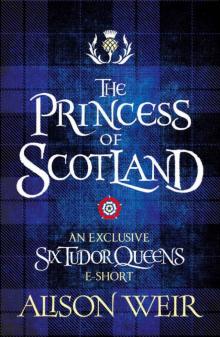 The Princess of Scotland (Six Tudor Queens #5.5)
The Princess of Scotland (Six Tudor Queens #5.5)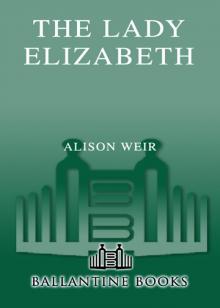 The Lady Elizabeth
The Lady Elizabeth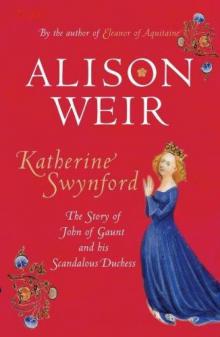 Katherine Swynford: The Story of John of Gaunt and His Scandalous Duchess
Katherine Swynford: The Story of John of Gaunt and His Scandalous Duchess The Curse of the Hungerfords
The Curse of the Hungerfords The Lost Tudor Princess: The Life of Lady Margaret Douglas
The Lost Tudor Princess: The Life of Lady Margaret Douglas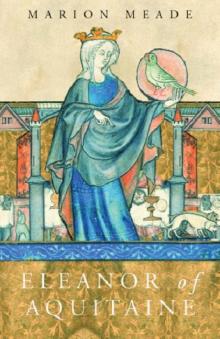 Eleanor of Aquitaine
Eleanor of Aquitaine Mistress of the Monarchy
Mistress of the Monarchy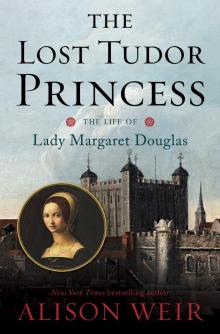 The Lost Tudor Princess
The Lost Tudor Princess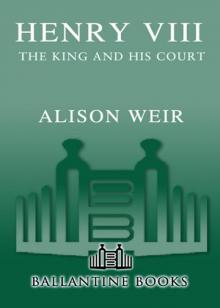 Henry VIII
Henry VIII Anne Boleyn, a King's Obsession
Anne Boleyn, a King's Obsession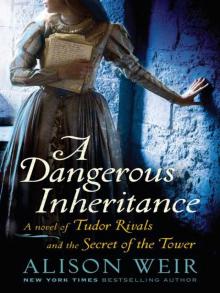 A Dangerous Inheritance: A Novel of Tudor Rivals and the Secret of the Tower
A Dangerous Inheritance: A Novel of Tudor Rivals and the Secret of the Tower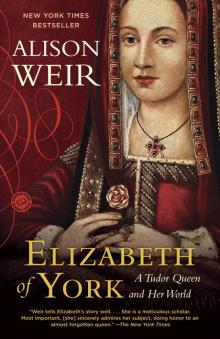 Elizabeth of York
Elizabeth of York Katherine of Aragon, the True Queen
Katherine of Aragon, the True Queen Katherine Swynford
Katherine Swynford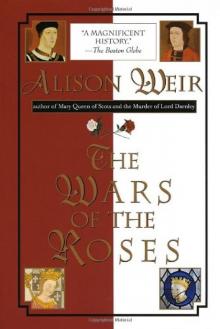 Wars of the Roses
Wars of the Roses Queens of the Conquest
Queens of the Conquest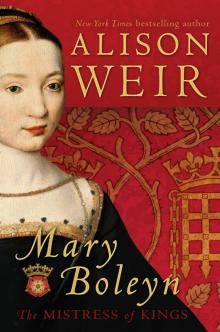 Mary Boleyn
Mary Boleyn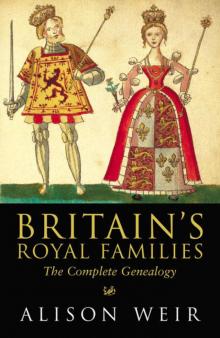 Britain's Royal Families
Britain's Royal Families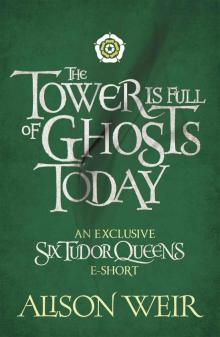 The Tower Is Full of Ghosts Today
The Tower Is Full of Ghosts Today Life of Elizabeth I
Life of Elizabeth I Anne Boleyn A King's Obssession
Anne Boleyn A King's Obssession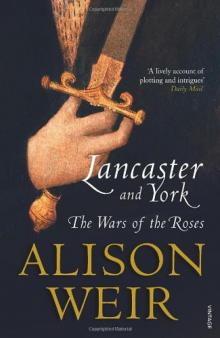 Lancaster and York
Lancaster and York Jane Seymour, the Haunted Queen
Jane Seymour, the Haunted Queen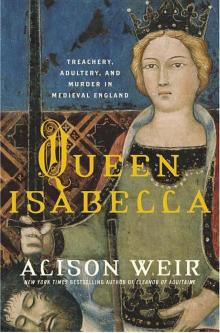 Queen Isabella
Queen Isabella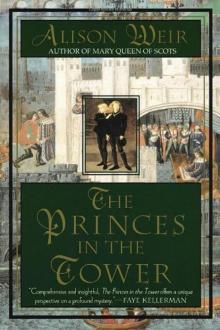 The princes in the tower
The princes in the tower